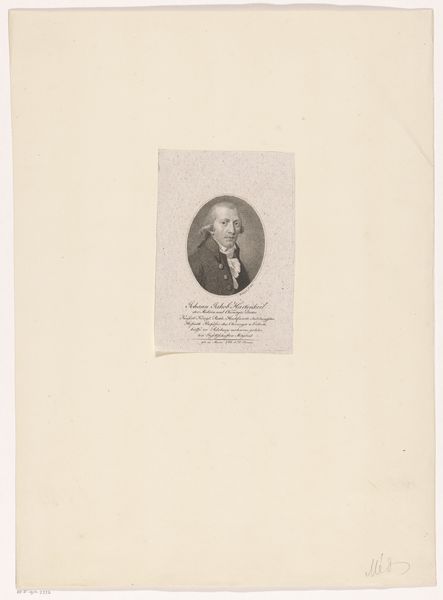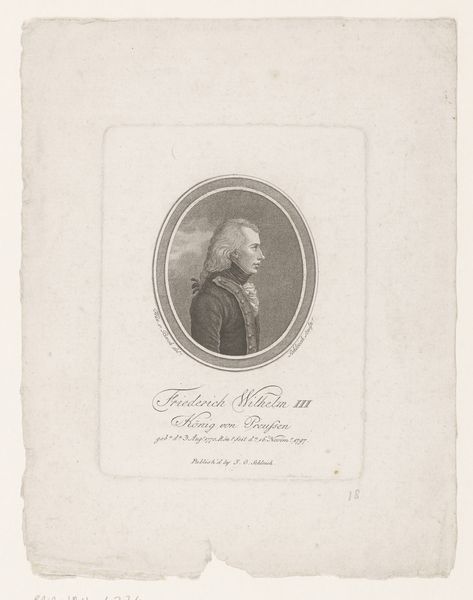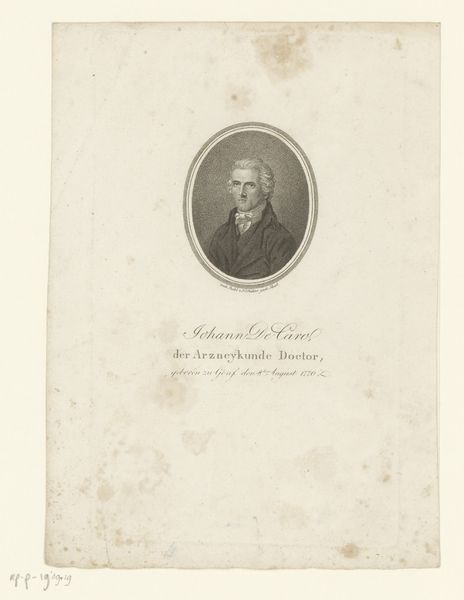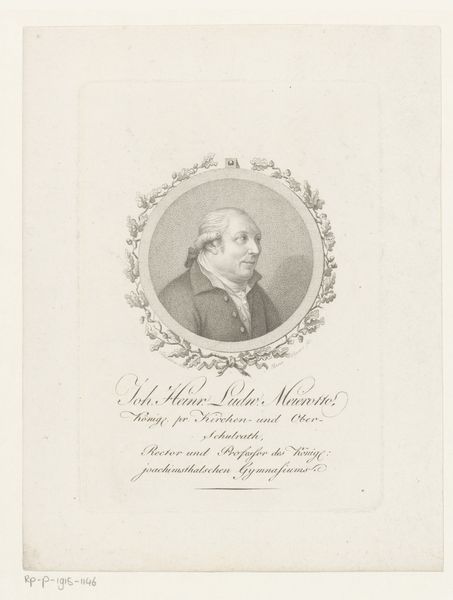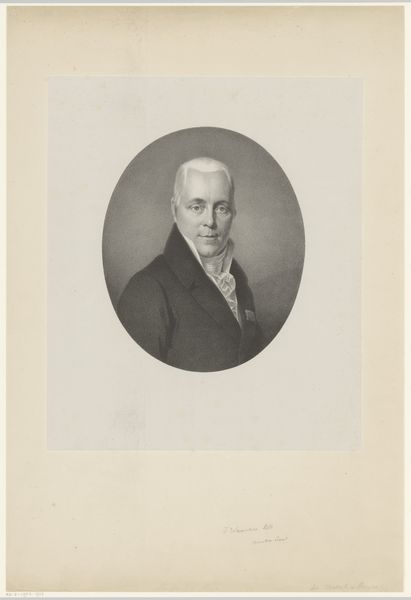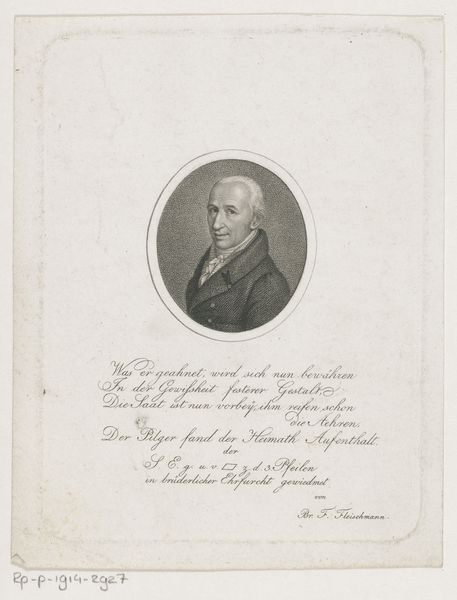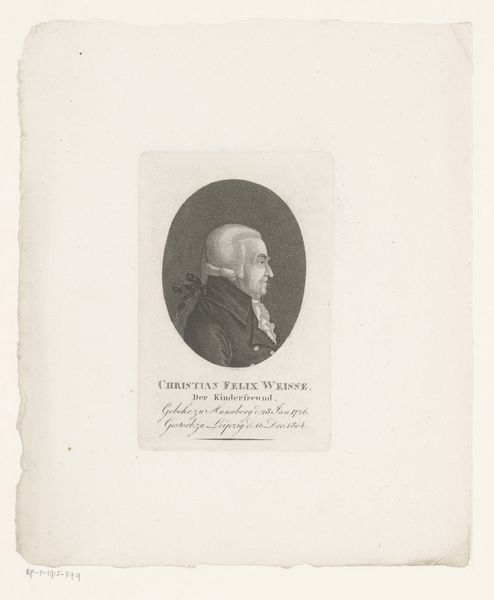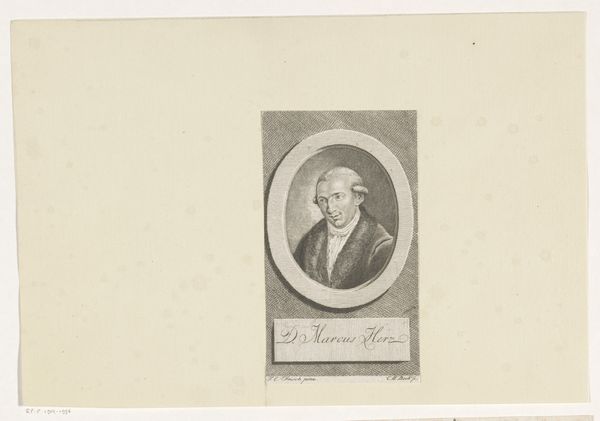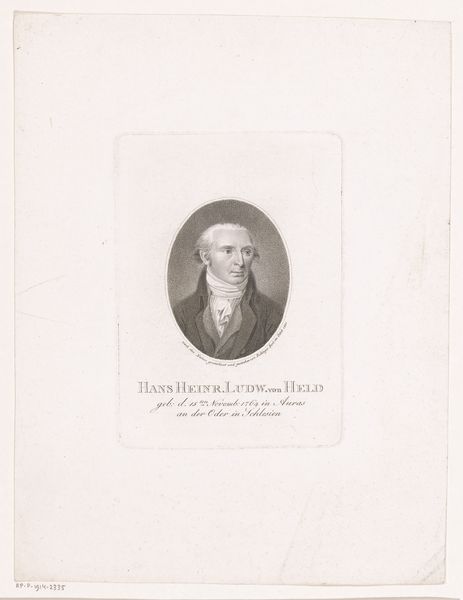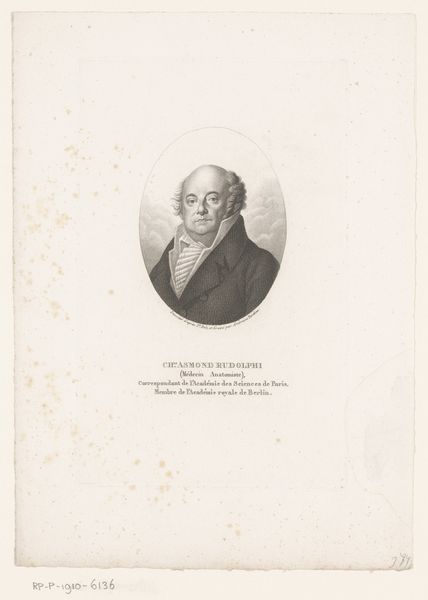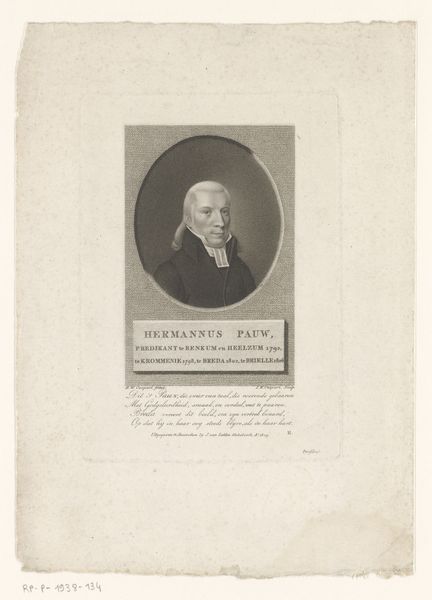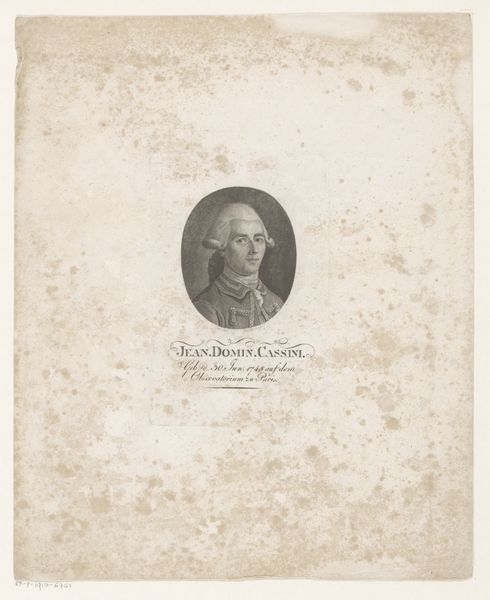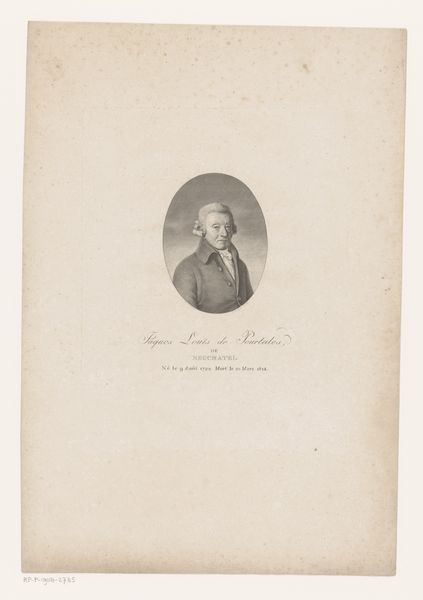
print, engraving
#
portrait
#
neoclacissism
# print
#
figuration
#
line
#
history-painting
#
academic-art
#
engraving
Dimensions: height 166 mm, width 108 mm
Copyright: Rijks Museum: Open Domain
Friedrich Wilhelm Meyer the first, made this print of Johann Ludwig Formey. Printed portraits like this one were common in the late 18th and early 19th century, particularly among the educated elite of Europe. We see Formey in an oval frame, a visual trope that harkens back to ancient coins, and therefore to the tradition of the classical world. The writing beneath the portrait describes Formey as a Royal Prussian privy councillor and personal physician, professor of practical medicine, and member of various learned societies in Berlin. What does it mean to produce images of scientists and doctors in this way? It suggests that medicine was becoming a kind of public spectacle, like philosophy or art. In the period, science and medicine were closely tied to the state. The Prussian government employed Formey, and was invested in making his work known to the public. By studying archival records, like membership lists of scientific societies, historians can better understand the role of institutions in shaping what we know about medicine and science.
Comments
No comments
Be the first to comment and join the conversation on the ultimate creative platform.
